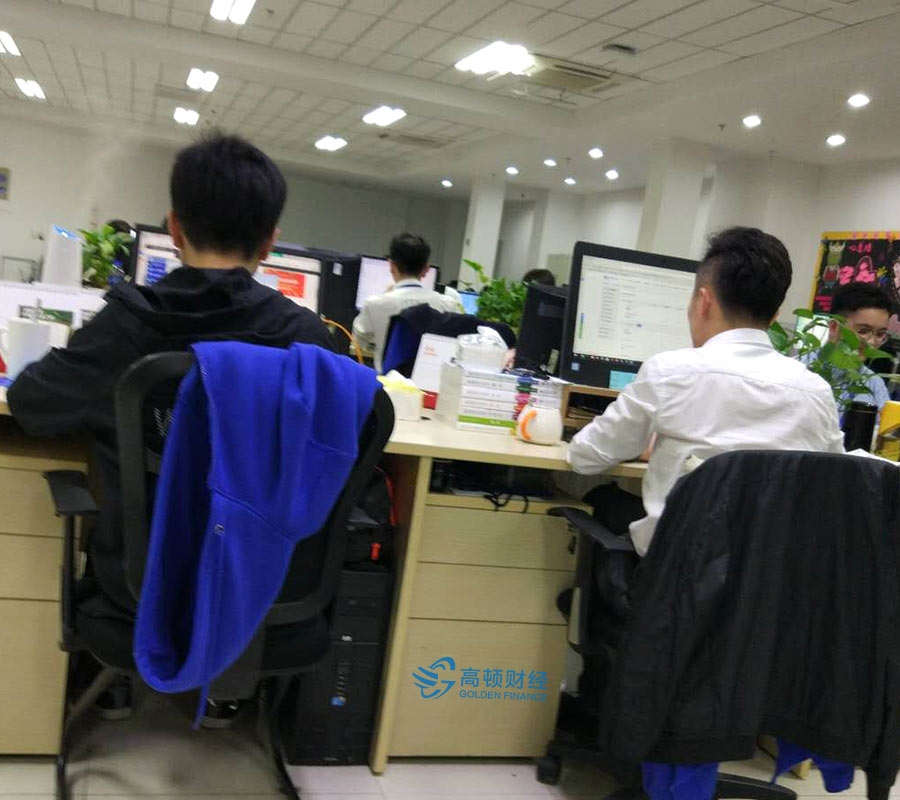CIMA报告:10步设定目标法
来源:
高顿网校
2013-11-18
CIMA报告:10步设定目标法:
1. Review stakeholder expectations:
You need to ask “who are our stakeholders?” and “what do they expect from us?” This will determine the critical areas your organisation needs to address in order to be perceived as successful.
2. Strategic objectives clarification/ selection:
Once the stakeholders’ expectations are identified, you need to express these as strategic objectives. Strategic objectives are clear statements of what the organisation needs to achieve. They must be few in number and should address the different stakeholders'requirements.
3. Success map:
A success map is a visual tool that shows how lower level objectives link to higher level strategic objectives. It is a powerful communication tool that explains “what” is to be achieved and “why”. It also shows where each part of the organisation contributes to achieving these goals.
4. Objectives prioritisation:
Most companies try to achieve too much. It is much better to prioritise and deliver fewer objectives than fail to deliver on too wide a range of goals. The focus will help employees too as they will be very clear about what is important in the coming period.
5. Operationalisation:
This means designing appropriate performance measures. How you define the measure will drive behaviour. So KPIs must reflect the organisation’s goals and encourage the right behaviour from those responsible for delivering the goals.
6. Data collection:
This step is often overlooked.You need to collect timely and relatively accurate information as a basis for setting your targets. Data is never perfect, but it does have to be consistent and reliable enough to be fit for purpose.
7. Data analysis:
This is fundamental. You have to draw on your knowledge of the past and of the future to project what is going to happen. You also have to analyse the capability of your processes. Are the processes capable of delivering the forecast? Most companies forecast, but fewer reassess their capabilities.
8. Set targets:
Based on the previous steps, this is the point you set the target. Judgement is required and you need to assess the risk of getting the target wrong. This is also where most organisations stop, but this is not the end of the process.
9. Action plan design:
An action plan is required covering all the projects and changes to the organisation that are needed to ensure the target is reached. This may include training, new processes, new IT systems or ways of working with your customers.
10. Action plan discussion and agreement:
The plan must be communicated to staff. The communication has to be two way and done regularly. Regular staff meetings where the objectives are restated, goals outlined and progress discussed is a good format. Sending out the annual targets by email is not! 
1. Review stakeholder expectations:
You need to ask “who are our stakeholders?” and “what do they expect from us?” This will determine the critical areas your organisation needs to address in order to be perceived as successful.
2. Strategic objectives clarification/ selection:
Once the stakeholders’ expectations are identified, you need to express these as strategic objectives. Strategic objectives are clear statements of what the organisation needs to achieve. They must be few in number and should address the different stakeholders'requirements.
3. Success map:
A success map is a visual tool that shows how lower level objectives link to higher level strategic objectives. It is a powerful communication tool that explains “what” is to be achieved and “why”. It also shows where each part of the organisation contributes to achieving these goals.
4. Objectives prioritisation:
Most companies try to achieve too much. It is much better to prioritise and deliver fewer objectives than fail to deliver on too wide a range of goals. The focus will help employees too as they will be very clear about what is important in the coming period.
5. Operationalisation:
This means designing appropriate performance measures. How you define the measure will drive behaviour. So KPIs must reflect the organisation’s goals and encourage the right behaviour from those responsible for delivering the goals.
6. Data collection:
This step is often overlooked.You need to collect timely and relatively accurate information as a basis for setting your targets. Data is never perfect, but it does have to be consistent and reliable enough to be fit for purpose.
7. Data analysis:
This is fundamental. You have to draw on your knowledge of the past and of the future to project what is going to happen. You also have to analyse the capability of your processes. Are the processes capable of delivering the forecast? Most companies forecast, but fewer reassess their capabilities.
8. Set targets:
Based on the previous steps, this is the point you set the target. Judgement is required and you need to assess the risk of getting the target wrong. This is also where most organisations stop, but this is not the end of the process.
9. Action plan design:
An action plan is required covering all the projects and changes to the organisation that are needed to ensure the target is reached. This may include training, new processes, new IT systems or ways of working with your customers.
10. Action plan discussion and agreement:
The plan must be communicated to staff. The communication has to be two way and done regularly. Regular staff meetings where the objectives are restated, goals outlined and progress discussed is a good format. Sending out the annual targets by email is not!

扫一扫微信,*9时间获取2014年CIMA考试报名时间和考试时间提醒
高顿网校特别提醒:已经报名2014年CIMA考试的考生可按照复习计划有效进行!另外,高顿网校2014年CIMA考试辅导高清课程已经开通,通过针对性地讲解、训练、答疑、模考,对学习过程进行全程跟踪、分析、指导,可以帮助考生全面提升备考效果。
报考指南:2014年CIMA考试备考指南
考前冲刺:CIMA备考秘籍
高清网课:CIMA考试网络课程
报考指南:2014年CIMA考试备考指南
考前冲刺:CIMA备考秘籍
高清网课:CIMA考试网络课程
版权声明:本条内容自发布之日起,有效期为一个月。凡本网站注明“来源高顿教育”或“来源高顿网校”或“来源高顿”的所有作品,均为本网站合法拥有版权的作品,未经本网站授权,任何媒体、网站、个人不得转载、链接、转帖或以其他方式使用。
经本网站合法授权的,应在授权范围内使用,且使用时必须注明“来源高顿教育”或“来源高顿网校”或“来源高顿”,并不得对作品中出现的“高顿”字样进行删减、替换等。违反上述声明者,本网站将依法追究其法律责任。
本网站的部分资料转载自互联网,均尽力标明作者和出处。本网站转载的目的在于传递更多信息,并不意味着赞同其观点或证实其描述,本网站不对其真实性负责。
如您认为本网站刊载作品涉及版权等问题,请与本网站联系(邮箱fawu@gaodun.com,电话:021-31587497),本网站核实确认后会尽快予以处理。
严选名师 全流程服务
其他人还搜了
热门推荐
-
CIMA考试必备攻略,前辈亲述! 2021-02-04
-
2021cima考试包含哪些内容?CIMA怎么考才高效? 2021-01-25
-
cima考试用哪些书?如何备考才高效? 2020-11-19
-
上班族怎么备考CIMA? 2020-11-06
-
CIMA BA2怎么考试才高效? 2019-08-02
-
过来人的CIMA复习技巧,值得一看 2019-07-01
-
CIMA:浅析管理会计与财务会计的融合 2015-10-21
-
CIMA管理会计:销售分公司财务控制 2015-10-21
-
CIMA管理会计:投资风险管理的程序 2015-10-21
-
CIMA所得税会计的六个误区分析 2015-10-14
-
CIMA资本运作模式 2015-09-23
-
CIMA所得税会计的六个误区 2015-09-23
-
CIMA:服务企业的特色管理会计模块 2015-09-14
-
CIMA管理会计考试英语词汇整理 2015-08-28
-
CIMA管理会计:中小企业融资有什么风险 2015-08-21
-
CIMA管理会计:中小企业融资有什么风险 2015-08-21
-
CIMA:中小企业融资有什么风险 2015-08-14
-
CIMA资料之民间非营利组织特定业务的核算 2015-08-14
-
CIMA突出资金管理 2015-08-14
-
财务管理五部曲之递进五部曲 2015-08-04
-
CIMA管理会计之投资风险管理的程序 2015-08-04
-
CIMA管理会计之销售分公司财务控制 2015-08-04
-
CIMA管理会计——预算不同阶段的操作方式 2015-08-04
-
管理会计中的多种成本概念汇总 2015-08-04
-
点石成金——CIMA学习指南 2015-08-04
-
CIMA管理会计课程及职业发展介绍 2015-07-28
-
CIMA知识:预算调整的原则有哪些? 2015-07-28
-
战略管理会计在物资公司的运用研究 2015-07-28
-
浅析管理会计与财务会计的融合 2015-07-28
-
会计委派制在会计管理体制改革中的重要性 2015-07-28
 高顿项目
高顿项目








